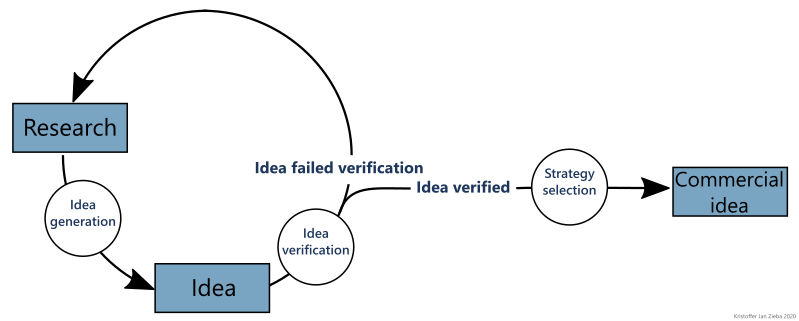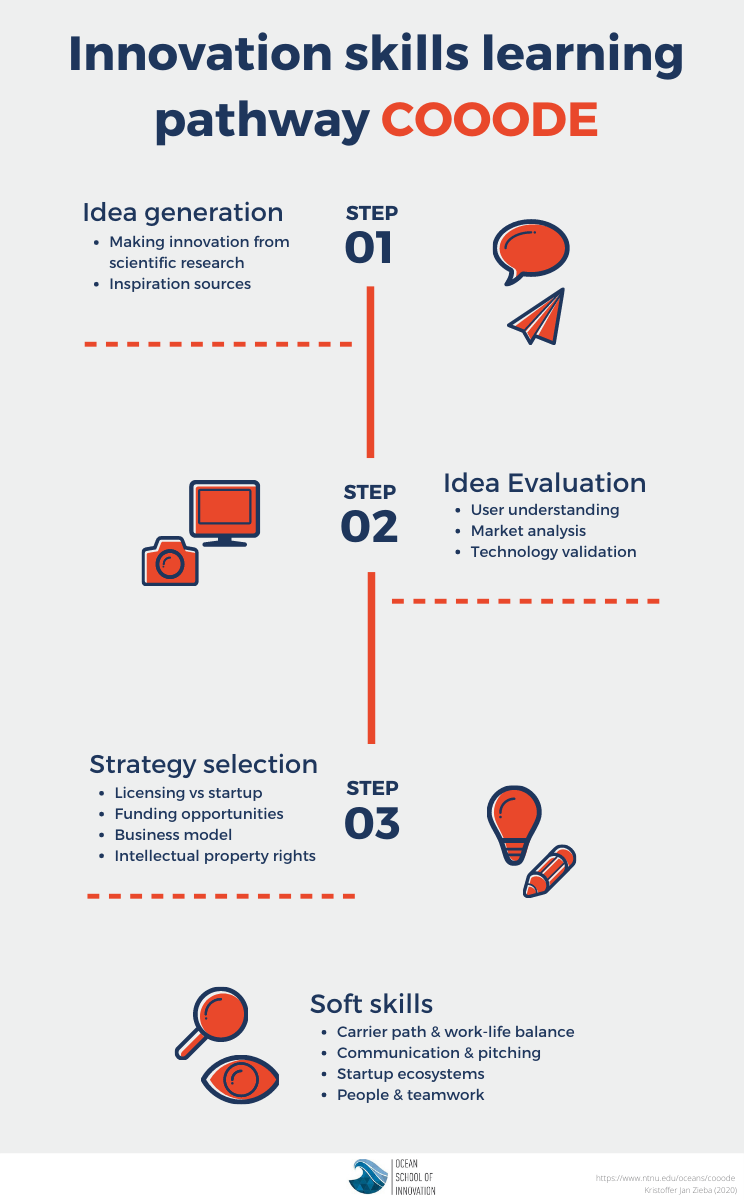Cooode
Start of the journey
For us a scientific innovation means making practical use of your research. It is a kind of journey - often long but extremely rewarding one. This journey is very unlike academic work and it is far from being linear and involves many successes and failures. One of the most important outcomes is that you will learn and develop your idea, your research, technical and soft skills.
The scope of this website – COOODE (Ocean’s Innovation Toolbox for Academic Entrepreneurs) is to provide you an overview of the most essential skills needed for development of a viable research-based innovative idea. Here we do not focus on development of business itself; we rather focus on building a solid groundwork for business development that will take place in the future. We bring however some key concepts of business and strategy planning that might be relevant later. You may wonder why you need any skills just for building an idea – it sounds rather straightforward. The short answer based on dozens of ideas we worked with is that the process is actually complex and involves many sub-tasks requiring many non- and technical skills. In addition, the better the idea is thought before actual work, the higher chances for successful business development are.
The sketch below shows a simplified process from research and related idea to a commercial idea – ready to be developed into business. Essentially, to reach the final stage, the idea needs first to be generated and refined (see 01 Idea generation), successfully validated or tested (see 02 Idea evaluation), and then an optimal commercialization strategy needs to be chosen (see 03 Strategy selection).

Idea evaluation is a preliminary test if your idea is technically viable and interesting for potential users. Most likely an idea validation will not be successful with the very first idea you have – the first idea will likely fail the test for many different reasons. As long as you know why it failed you made a great progress – you learned! If this is the case, you will most likely have a look at your research again and modify the initial idea based on the feedback from the validation process. This might imply small technical modifications but can also imply large changes of the initial idea, even turning it upside down.
Let’s assume you have completed some loops of idea modification and validation and the idea seems technically viable and likely to be interesting for a market and some users. Now it is time for strategy selection – a most optimal path for commercialization of the idea. Here you (most likely with help of others) will describe a plan for how to get to potential customers and users. At this stage you will need some input from other stakeholders like specialists in business and commercialization and partner organizations.
In COOODE we give you example resources that we know are of good quality and helpful. We suggest treating them as a starting point for learning more – both in theory and in practice. We absolutely encourage you to dig deeper in the topic: joining meetings like these of Ocean School of Innovation, speaking with people who do have competences in this area such as (former) academic entrepreneurs, university innovation leaders/officers and Technology Transfer Offices.

